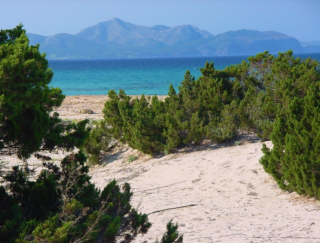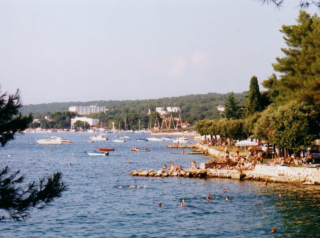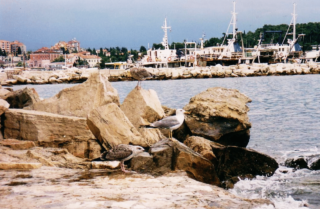Istria & Krk: A Tale of Two Northern Gems
While Croatia’s coastline is famously dotted with peninsulas, the Istrian peninsula in the country’s north-west corner is a world apart. This is a land where cultures beautifully collide, spilling over the borders of Croatia, Slovenia, and Italy. In fact, this captivating region is shared between these three nations, with the lion’s share, almost 90% belonging to Croatia. To their Italian neighbours, it’s known as Istria, a name that hints at its rich, cross-cultural soul.

Istria: Truffles, Romans, and Timeless Charm
Istria holds the title of the largest peninsula in the entire Adriatic. To give you a sense of its scale, the distance from the ancient city of Pula to the Slovenian border is about 60 kilometres as the crow flies, and to Italy, it’s around 80 kilometres and though the scenic coastal roads will make the journey feel wonderfully longer!
This is a region famed for its gourmet delights, most notably the exquisite truffles that are foraged from its lush interior forests. These aromatic fungi are shaved over pasta and infused into oils, creating a culinary experience that is pure luxury.
The largest city on the Croatian side is Pula, nestled at the southern tip of the peninsula. While the Slovenian city of Koper and the Italian Trieste are larger in size, Pula punches well above its weight in historical drama. This city of under 60,000 inhabitants is dominated by its spectacular Roman amphitheatre, one of the best-preserved in the world, where gladiators once battled.
Though our time on the peninsula was brief, a highlight was discovering a local producer selling truffle oil and other truffle-infused delicacies. It was an absolute treasure trove! The prices were a pleasant surprise compared to what you’d find elsewhere in Europe, making it the perfect place to pick up an edible souvenir.
The Island of Krk: A Bridge to Adventure
Our journey on this particular occasion, however, was destined for the island of Krk. A quick linguistic note: Croatians have a flair for consonant-rich names. Be careful not to confuse the island of Krk with the magnificent Krka National Park in Dalmatia, the latter famous for its breathtaking waterfalls.
The first impression of Krk is nothing short of spectacular. You don’t take a ferry – you drive across a vast, architectural marvel of a bridge – the Krk Bridge – which does have a toll. The feeling is grand and awe-inspiring. The approach is just as dramatic, as you wind down rocky serpentine roads to reach the bridge’s ramp. It’s a stunning piece of engineering that immediately sets the tone for an unforgettable stay.
Krk distinguishes itself from many other Croatian islands with its remarkably verdant landscape. It’s not arid or rocky, but lush and green, earning it the nickname “The Golden Island.” Krk’s historic Italian name is Veglia, but by the Latin name from Roman times is Curicta. It’s also the most populated island in the Adriatic, home to around 20,000 people

An Island Steeped in History
Krk’s history is as rich as its scenery. Like much of the region, it was once part of the Roman Empire, later fell under Byzantine rule, and was conquered by the Venetians in the 11th century. It remained a vital part of the Venetian Republic for an astonishing seven centuries, before periods under Austrian and Italian rule in more modern times, finally becoming part of Croatia after the Second World War.
That magnificent Krk Bridge, which provides such a dramatic entrance, was built in 1980 and remains one of the world’s longest reinforced concrete bridges, stretching an impressive 1.4 kilometres.
While the beaches here are typically Croatian – think beautiful smooth pebbles and rocks rather than sand – Krk is incredibly popular. Its location in the northern Adriatic makes it easily accessible for tourists from Germany and Austria, who can drive there in less than four hours from southern Austria. In fact, Rijeka Airport is conveniently located on the island, despite the city of Rijeka itself being on the mainland.
So, while the island’s history is long and fascinating, the main purpose of your visit is to relax and indulge. The crystal-clear waters, charming coastal towns, and delicious local cuisine are calling. All that’s left for you to do is pack your suitcase and come enjoy it for yourself.
adventures attractions Belgium Bulgaria city break Croatia Czech Republic day out England Estonia France Germany Greece heritage hiking holidays Iceland islands Italy Latvia Lithuania London Montenegro nature Norway Poland recipes Rome Scotland Spain Switzerland
